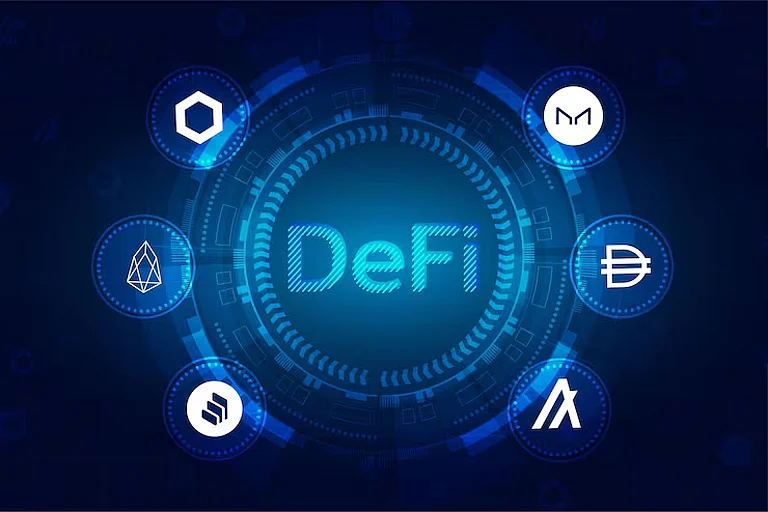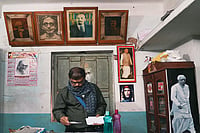Blockchain has progressed an atrocious long way from the good old 2009 days of Bitcoin. Its objective of decentralization, transparency, and security has revolutionized digital currency, but there is one issue from the past—the scalability issue. With more people requiring the network, networks such as Ethereum become slow, transaction times decrease, and gas prices increase. Layer 2 scaling solutions are seen here. Not only are they enhancing blockchain usability, they're enabling mass adoption across the industry. Most promising in this category is likely Rollup-as-a-Service (RaaS)—a product that streamlines and expedites Layer 2 deployment for developers and organizations.
Understanding Layer 1 vs. Layer 2 Difference
To understand the promise of Layer 2 scaling, to begin with, one must first understand how Layer 2 is different from Layer 1. The Layer 1 network—such as Bitcoin or Ethereum—is the main blockchain that actually processes the transactions and provides security through mechanisms such as Proof of Work (PoW) or Proof of Stake (PoS). The more transactors, however, the more Layer 1 chains get saturated to their capacities and transactions become pricier and lower throughput.
Layer 2 solutions are implemented on top of Layer 1, doing transactions off-chain but with exactly the same security guarantees by rewarding outcomes back to the originating blockchain every now and then. They're quicker, cheaper, and less stressful on the underlying base layer, so that's right. Layer 2 is essentially a high-speed lane on a high-street highway—it doesn't take traffic around the main road but optimizes how traffic flows.
Why Scalability is Important in Blockchain
Scalability is not a buzzword; it's the buzzword. Consider this: a world in which decentralized finance (DeFi), non-fungible tokens (NFTs), gaming, and business solutions all depend on blockchain. Without scalability, networks would never be able to process millions of transactions per second. That is where Layer 2 scaling solutions make blockchain feasible at scale—without sacrificing speed and price competitiveness or decentralization.
The Rollup Revolution: Game Changer
Of all Layer 2 solutions, rollups have worked most efficiently. Rollups achieve this by batching a high number of transactions into a single set, which is then applied to the base blockchain. This significantly minimizes data load and per-transaction cost.
There are two general categories of rollups: Optimistic Rollups and Zero-Knowledge (ZK) Rollups. Optimistic Rollups presuppose transactions to be valid unless disputed, while ZK Rollups employ cryptographic verification for transactions to post on Layer 1 after ensuring their validity through cryptography. Both are more efficient but used to slightly different purposes.
Also, it was tedious to set up and maintain rollup infrastructure. Nevertheless, this roadblock is reducing as Rollup-as-a-Service (RaaS) providers are providing plug-and-play offerings to developers and companies.
What Is Rollup-as-a-Service (RaaS)?
Rollup-as-a-Service (RaaS) is a setup that equips developers with pre-deployed rollup templates in the sense that they don't have to dig deep into technical Layer 2 infrastructure expertise. It's like cloud hosting for rollups—where companies get to host bespoke Layer 2 networks without necessarily having to construct everything anew.
A RaaS platform would generally take responsibility for such vital operations like node configuration, data availability, smart contract deployment and management, and maintenance. This simplifies developers' lives while constructing user-level applications without having to bother about scalability mechanisms internally.
For those firms willing to enter the world of Web3, Rollup-as-a-Service (RaaS) is an off-the-shelf gateway. It fills the technology innovation business-implement disconnect, enabling game studios, DeFi companies, and brands to create high-performance dApps (decentralized apps) at scale.
How Rollup-as-a-Service (RaaS) Revolutionizes Blockchain Development
RaaS is revolutionizing blockchain development into the following. Firstly, it reduces time-to-market by a significant amount. Rather than months of infrastructure set-up, teams can deploy Layer 2 networks in days. Secondly, RaaS facilitates customization—developers can implement their desired rollup type, consensus mechanism, and governance model.
Third, it is interoperable. Most RaaS providers provide support for multiple chains so that projects can natively interact across various blockchains. Cross-chain compatibility is quite critical in a time when individuals and assets are divided between such ecosystems as Ethereum, Polygon, Arbitrum, and Avalanche.
Lastly, with workout-sourced operations, firms are more concentrated on innovation than infrastructure. This change is a reflection of the evolution of cloud computing, where offerings such as AWS and Google Cloud fueled the internet economy. Likewise, Rollup-as-a-Service (RaaS) is fueling the decentralized economy.
Applications of Layer 2 and RaaS in Real Life
Layer 2 solutions are not theoretical-those which already exist have a revolutionary impact. Within DeFi networks, rollups are being leveraged by platforms to process massive numbers of transactions cheaply, allowing users to buy and sell tokens, lend, or stake with impunity. Gaming protocols are using Layer 2 networks to process tens of thousands of microtransactions without needing to freeze players in their tracks with too much in fees.
Companies entering the field of blockchain-powered supply chain tracking, loyalty programs, and digital identities also leverage Layer 2 scalability. Compliant, private, and secure rollups can be hosted by them as needed, either for internal data processing or public systems, using Rollup-as-a-Service (RaaS).
Challenges and the Road Ahead
While Layer 2 scaling and RaaS are excellent innovations, issues still remain unaddressed. Rollup and Layer 1 blockchain interoperability need to be optimized so that the experience is seamless for the users. Security is also something to be on the lookout for—since Layer 2 is based on smart contracts, bugs or exploits will result in losses if not audited properly.
In addition, builders must balance decentralization with efficiency. Over-centralization of rollup infrastructure would compromise the integrity of blockchain. However, with new RaaS providers that mature, novel decentralized governance structures and modulized designs emerge that undercut such challenges.
The second wave of blockchain will come from the integration of RaaS platforms and modular blockchains where each level deals with particular activities like data storage, consensus, or execution. Modular architecture, because of automation within RaaS, could potentially make networks economical and scalable to the extent of legacy systems in terms of speed.
The Future of Blockchain Scalability
The blockchain scaling saga continues, but one thing is certain, that Layer 2 scaling solutions and Rollup-as-a-Service (RaaS) are leading it all. With decreasing barriers to entry, these technologies allow startups as well as giant corporations to enter the decentralized world without any financial or technical limitations.
In the next few years, RaaS will be the dominant Web3 infrastructure because cloud computing fuels the current internet. Increasingly, developers are using it, and thus the blockchains will experience more experimentation, interoperability, and uptake.
Layer 2 scaling, led by the RaaS paradigm, is not only better—it's better than that. It's an evolution that's transforming what can be done on the blockchain. With increased speeds of transactions, reduced cost for it, and simple deployment, the potential for a global, accessible, and scalable decentralized tomorrow is now within grasp.
In short, Layer 2 scaling solutions are Band-Aids for no one, but enablers of the full potential of blockchain. And with Rollup-as-a-Service (RaaS) leading the charge, the next generation of blockchain evolution is going to be faster, wiser, and more inclusive than ever before.

























